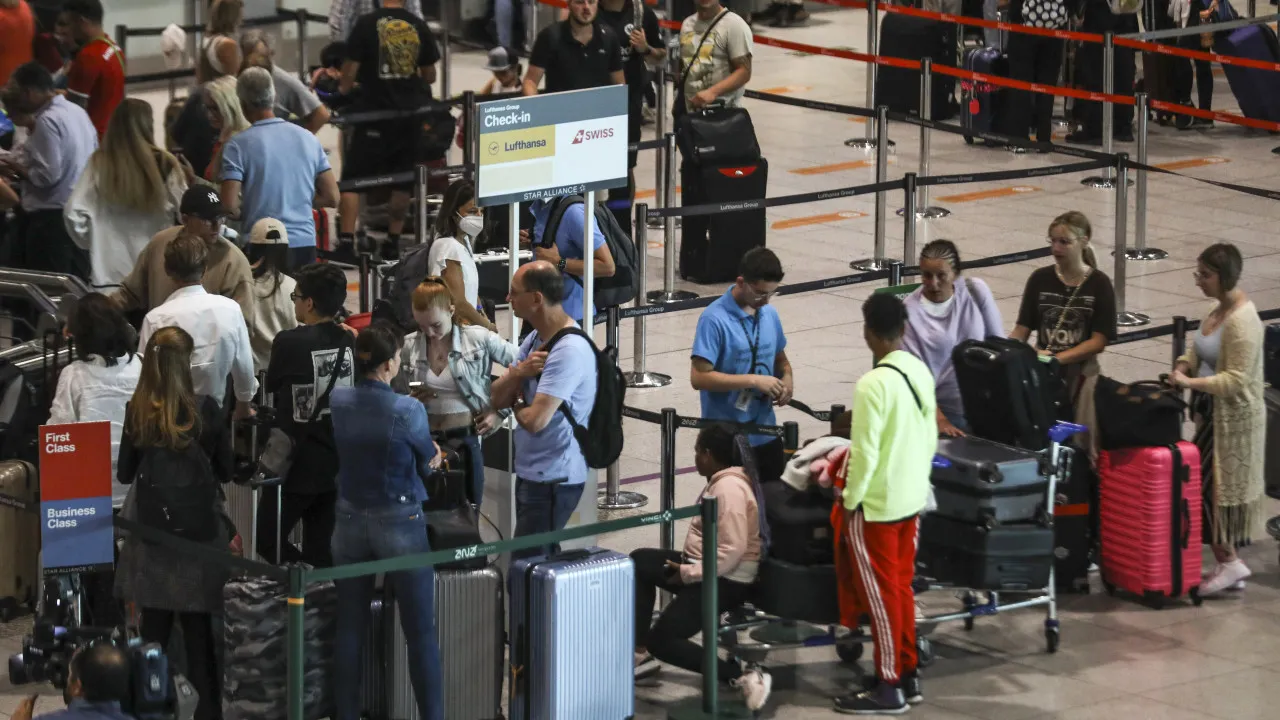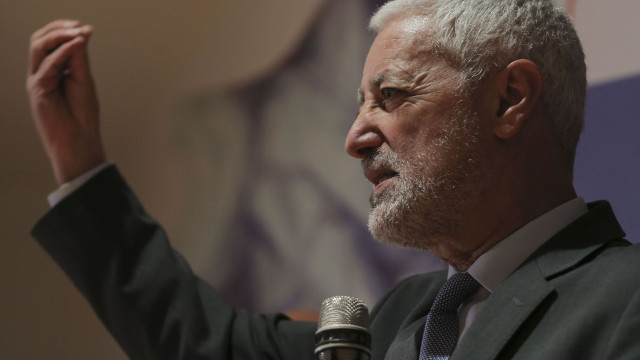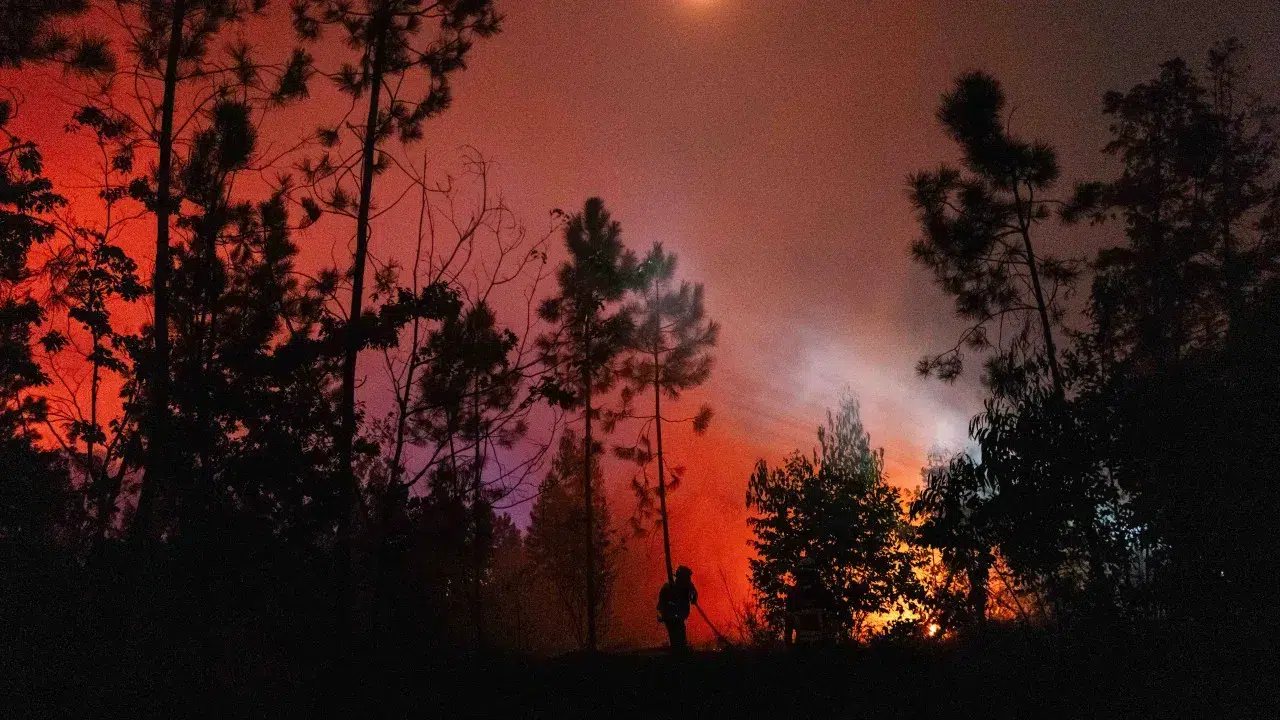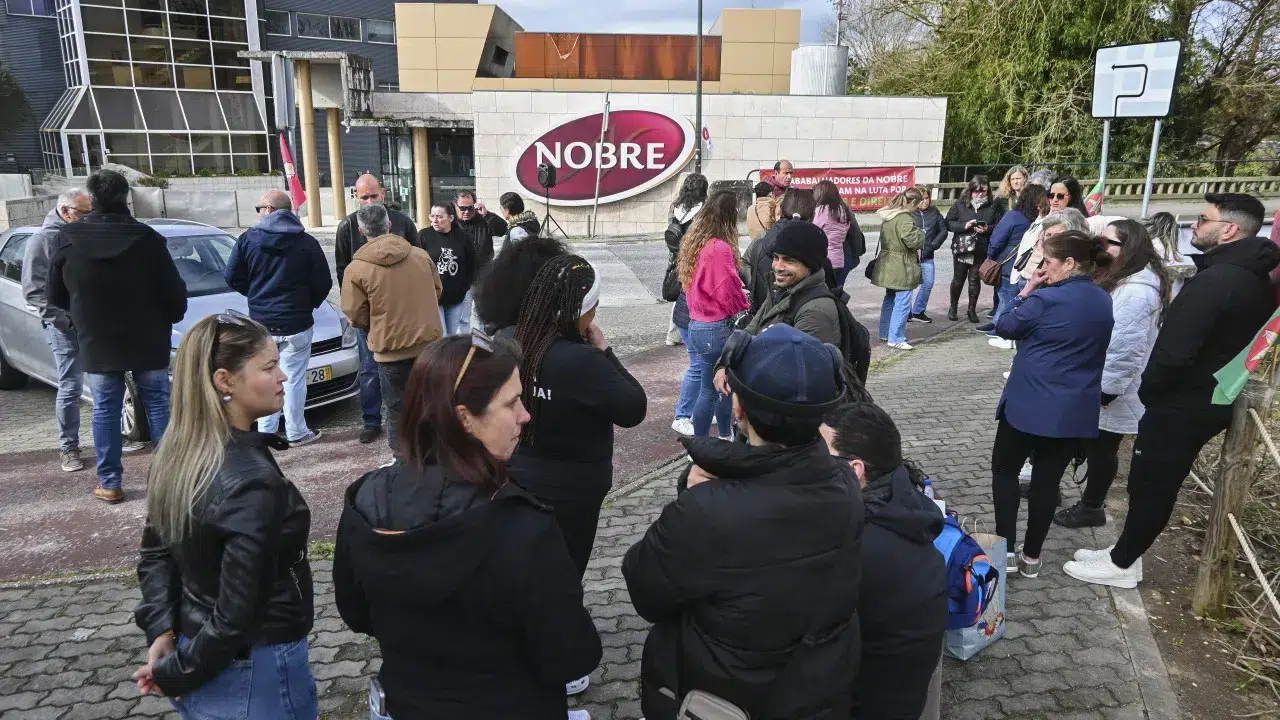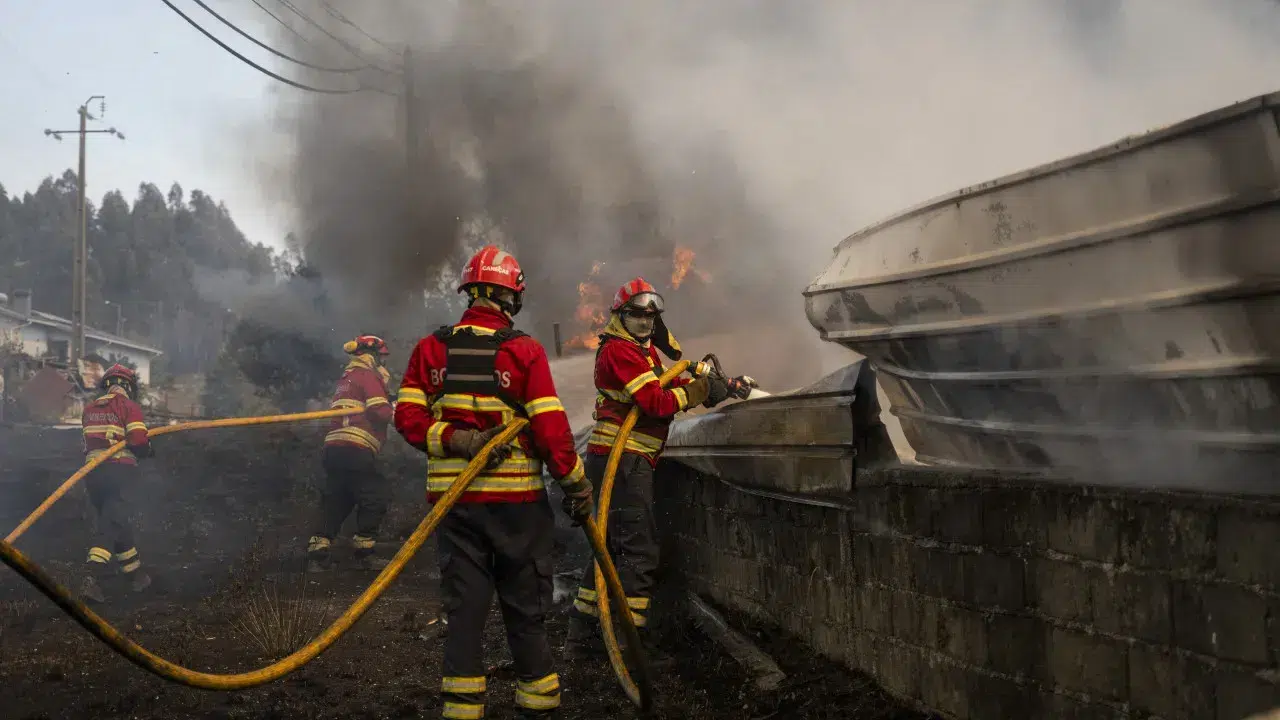
“The entire team is positioned along the perimeter to conduct surveillance, stabilization efforts, and combat sporadic flare-ups. Currently, the situation is calm,” stated José Requeijo to Lusa agency around 1:00 PM.
This fire began on Saturday, the 2nd, in Sirarelhos, entered the resolution phase on Wednesday, was concluded, and reignited on Saturday night at 9:06 PM, gaining strength on Sunday afternoon due to strong winds and high temperatures.
The flare-up entered the resolution phase early this morning.
The fire moved through the highland for nearly a week and, on Sunday afternoon, driven by the wind, descended reaching villages such as Relva, Muas, Agarez, Ramadas, Outeiro, Borbela, and the upper part of the village of Lordelo, affecting the Alvão Natural Park area.
Today, approximately 330 personnel, mainly firefighters, are deployed across the terrain with 107 vehicles, along with two Army platoons with 50 soldiers and two bulldozers from the Institute for Nature Conservation and Forests (ICNF).
The second sub-regional commander of Douro also mentioned that two aerial units deployed to this fire are working to suppress flare-ups and cool hotspots.
Concerns are focused on the afternoon hours due to the rising temperatures in the region.
“We hope that the way we have planned and positioned our resources will be sufficient to keep the day more tranquil,” noted José Requeijo.
The commander highlighted that the “pressure is immense” due to a large number of incidents, particularly in the North and Center of the country, but stressed that efforts will be made to “maintain as much of the deployment and capacity” on the ground.
The Alvão highlands spread across Vila Pouca de Aguiar, Ribeira de Pena, Vila Real, and Mondim de Basto, having burned areas in these four municipalities over a week through three different fires (Sirarelhos, Pinduradouro, and Alvadia).

